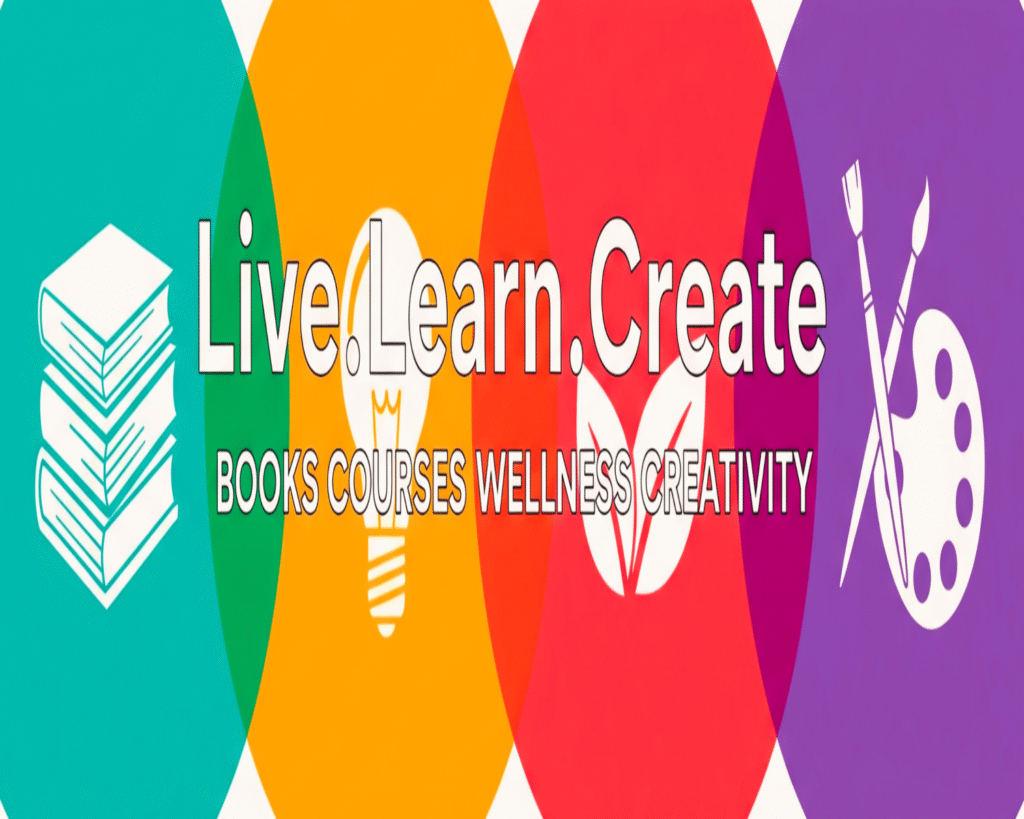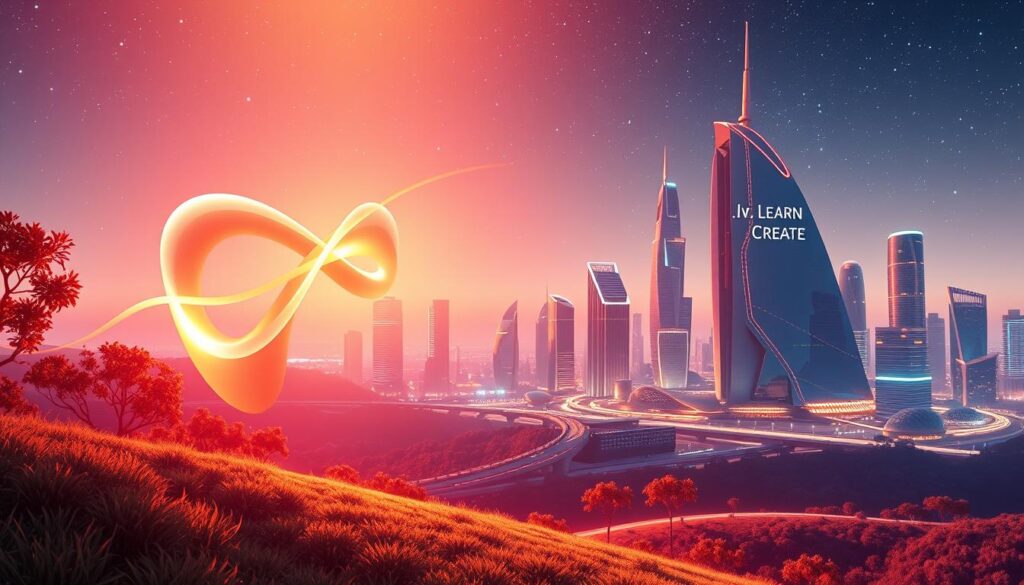
Did you know that innovation is the driving force behind some of the most significant advancements in human history? It’s the spark that transforms ordinary ideas into extraordinary solutions, bringing value and change to our lives.
Innovation isn’t just about creating something new; it’s about bringing new ideas to life through creativity and practical application. As we explore the power of innovation, we’ll discover how it shapes our world, from the products we use daily to the ways we solve complex global challenges.
Key Takeaways
- Innovation is a powerful force for progress and positive change.
- It involves transforming creative concepts into tangible outcomes.
- Innovation requires both creative thinking and practical application.
- Understanding innovation can help you navigate change and create positive impact.
- Ignite your inner innovator with tools and inspiration from livelearncreate.blog.
The Essence of Innovation
The essence of innovation lies in its ability to transform ideas into practical applications. It’s about making a meaningful impact in the market or society through the implementation of new or improved abilities.
Defining Innovation in Today’s World
In today’s world, innovation is often associated with technology and progress. It’s about finding new ways to solve problems or improve existing solutions. Innovation can refer to something entirely new or to a significant change made to an existing product, idea, or field.
The concept of innovation is closely related to, but distinct from, invention. While invention focuses on creating something entirely new, innovation is about implementing, adapting, or improving existing ideas or inventions to create practical value.
Innovation vs. Invention: Understanding the Difference
Understanding the difference between innovation and invention is crucial. Invention typically refers to the original breakthrough or discovery, whereas innovation focuses on the practical application of that discovery.
- Innovation involves turning “what could be” into “what is” by bridging the gap between theoretical possibility and practical application.
- Many successful innovations build upon existing inventions, adding refinements or finding new applications that make them more valuable or effective.
By understanding this distinction, we can appreciate that innovation doesn’t always require creating something from scratch. Sometimes, the most impactful innovations come from seeing new potential in what already exists, leveraging technology to drive progress.
The Evolution of Innovation Throughout History
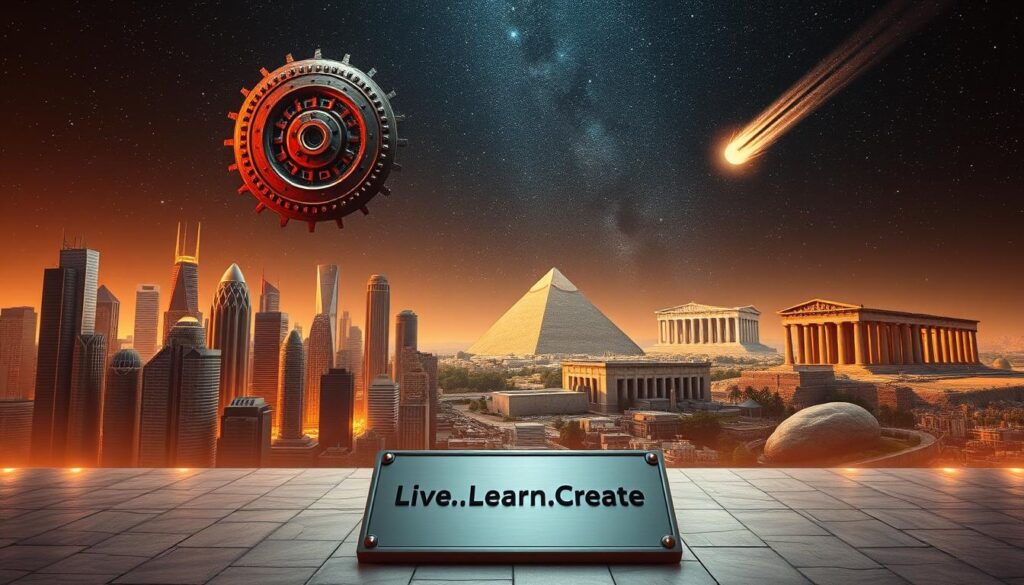
The concept of innovation has undergone significant transformations throughout history, shaping the way we live and work today. As we journey through the evolution of innovation, we find that its impact on society has been profound and far-reaching.
From Ancient Concepts to Modern Understanding
The idea of innovation is not new; it has its roots in ancient times. However, the way we understand and apply innovation has changed dramatically. In the past, innovation was often associated with new technologies or processes that improved production and led to economic growth. Today, we recognize that innovation is a driving force behind competitive advantage in the global market.
Key Figures Who Shaped Innovation Theory
Several visionary thinkers have profoundly shaped our understanding of innovation and its role in economic growth. Joseph Schumpeter stands out as a pivotal figure in innovation theory, introducing the concept of “creative destruction” – the idea that innovation constantly revolutionizes economic structures from within. Schumpeter’s work highlighted the importance of technology in driving innovation and shaping the modern economy.
Other key contributors, such as Peter Drucker and Clayton Christensen, have also made significant contributions to our understanding of innovation. Their insights have helped us recognize that innovation is not just about isolated inventions but about systematic processes that drive progress and transformation.
Types of Innovation That Drive Progress
To truly understand innovation, it’s essential to explore its diverse types that fuel growth and development. Innovation is not a one-size-fits-all concept; rather, it encompasses a range of strategies that businesses and organizations can adopt to stay ahead of the curve.
Product and Service Innovation
Product and service innovation involves creating new or improved products and services that meet the evolving needs of customers. This type of innovation is crucial for businesses looking to differentiate themselves in competitive markets. By focusing on product innovation, companies can introduce new features, improve performance, or enhance user experience, thereby driving customer engagement and loyalty.
Process and Business Model Innovation
Process and business model innovation are about transforming the way businesses operate and generate revenue. Process innovation streamlines operations, reduces costs, and improves efficiency, while business model innovation involves rethinking how a company creates, delivers, and captures value. This can lead to new revenue streams and competitive advantages.
Disruptive vs. Sustaining Innovation
Disruptive innovation creates new markets or disrupts existing ones, often through the introduction of groundbreaking products or services. In contrast, sustaining innovation involves incremental improvements to existing products or services, helping businesses maintain their market position. Understanding the difference between these two types of innovation is crucial for developing effective innovation strategies.
Open and User-Driven Innovation
Open innovation and user-driven innovation represent a paradigm shift from traditional closed innovation models. Open innovation involves collaborating with external partners, customers, and even competitors to accelerate innovation. User-driven innovation puts customers at the center, engaging them as co-creators. Companies like LEGO have successfully implemented user-driven innovation through platforms like LEGO Ideas, where fans can submit product concepts.
By embracing these different types of innovation, businesses can tap into collective intelligence, reduce development costs, and create solutions that better address real user needs. As the landscape of innovation continues to evolve, understanding and leveraging these various approaches will be key to driving progress and achieving success.
The Innovation Process: From Idea to Impact
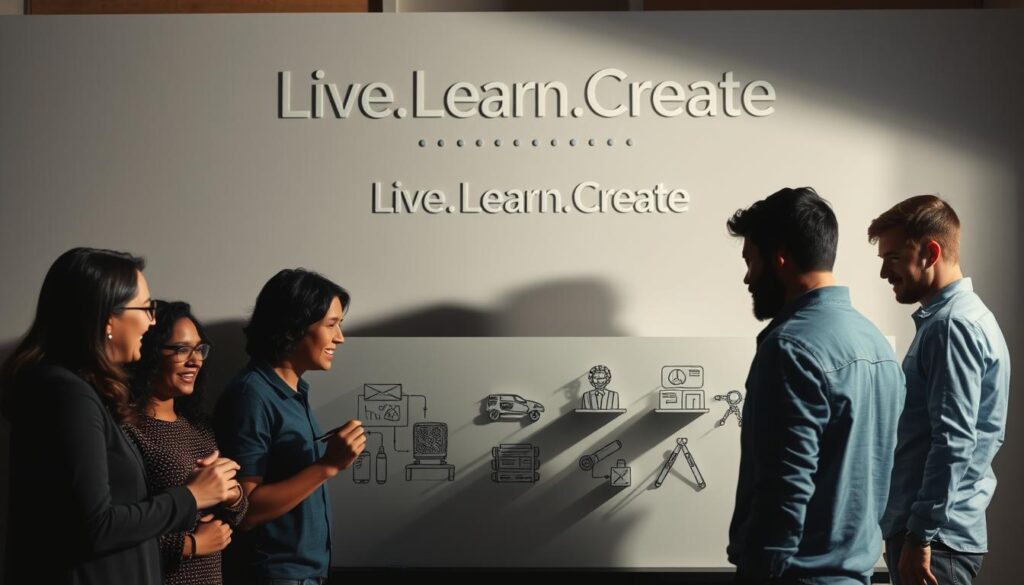
Innovation is a multifaceted process that takes ideas from conception to real-world impact. It’s a journey that involves several key stages, from identifying opportunities to implementing and scaling innovations.
Identifying Opportunities and Generating Ideas
The first stage of the innovation process involves identifying opportunities and generating ideas. This requires a deep understanding of the market, customers, and technological trends. Organizations can foster a culture of innovation by encouraging creativity, providing resources for research and development, and promoting collaboration among diverse teams.
- Encouraging creativity through brainstorming sessions and workshops
- Providing resources for research and development
- Promoting collaboration among diverse teams
Evaluating, Developing, and Testing Concepts
Once ideas are generated, they need to be evaluated, developed, and tested. This involves assessing the feasibility of the ideas, developing prototypes, and testing them with potential users. Feedback from users is crucial in refining the concepts and ensuring they meet the needs of the target market.
- Assessing the feasibility of ideas
- Developing prototypes
- Testing with potential users
Implementation, Scaling, and Continuous Improvement
After testing and refining the concepts, the next step is implementation and scaling. This involves developing a detailed implementation plan, allocating resources, and executing the necessary actions. Continuous feedback and evaluation are essential to ensure the innovation meets its intended goals and achieves improved quality over time.
- Developing a detailed implementation plan
- Allocating resources and executing actions
- Continuously evaluating and improving the innovation
The innovation process is not a one-time event but a continuous cycle of improvement and growth. By embracing this process, organizations can stay ahead of the curve and achieve meaningful impact through their innovations.
Building a Culture of Innovation
Creating a culture that values innovation is key to unlocking new opportunities and achieving success. A culture of innovation promotes an open and inclusive environment where individuals feel empowered to contribute their ideas and embrace change.
Innovation involves a mindset that embraces change, welcomes ideation, and encourages experimentation. By fostering such a culture, organizations can drive progress and stay ahead in today’s competitive landscape.
Leadership’s Role in Fostering Innovation
Leadership plays a pivotal role in cultivating a culture of innovation. Leaders must set the tone by encouraging creativity, supporting experimentation, and rewarding innovative ideas. By doing so, they create an environment where employees feel valued and motivated to contribute.
Effective leaders also lead by example, demonstrating a willingness to take calculated risks and embrace new ideas. This approach helps to build trust and fosters a sense of security among team members, allowing them to explore new ways of thinking and problem-solving.
Creating Safe Spaces for Experimentation
Creating safe spaces for experimentation is essential for innovation to flourish. These environments can be physical, like innovation labs, or cultural, where norms encourage experimentation. By providing the freedom to explore and take calculated risks, organizations can unlock new ideas and approaches.
Companies like 3M and IDEO have pioneered approaches to creating these safe spaces, recognizing that innovation involves venturing into the unknown. By balancing accountability with the permission to fail, they focus on learning and growth rather than perfect outcomes from every experiment.
To unlock your potential for experimentation and creativity, explore resources and techniques at https://livelearncreate.blog. By embracing a culture of innovation, you can drive progress and achieve success in various aspects of your life and organization.
Key Components That Make Innovation Possible
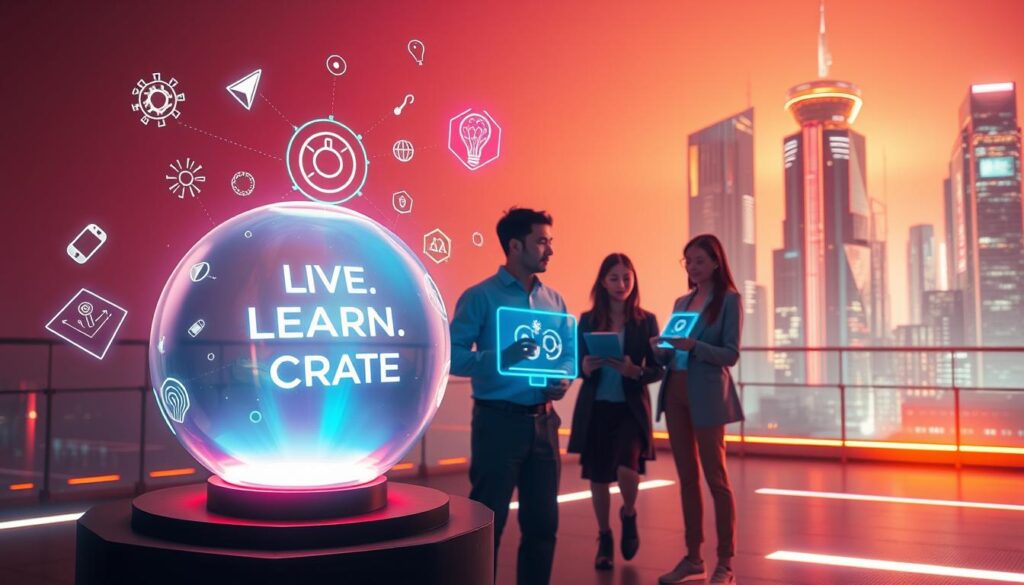
Making innovation possible requires a combination of key components that work together seamlessly. To drive progress and achieve success, organizations need to understand the essential elements that enable innovation to flourish.
Creativity and Resource Allocation
Creativity is the spark that ignites the innovation process. It’s the ability to generate new ideas, explore novel solutions, and think outside the box. To foster creativity, organizations need to allocate resources effectively, providing the necessary support and infrastructure to bring ideas to life. This includes investing in talent, technology, and training, as well as creating a culture that encourages experimentation and risk-taking. Looking for a spark of inspiration? Find your creative fuel at https://livelearncreate.blog.
Feedback Systems and Risk Management
Feedback is a critical component of the innovation process. It provides the information needed to refine ideas, correct course, and maximize impact. Effective innovation requires gathering diverse feedback from multiple sources – customers, employees, partners, and market data – creating a comprehensive picture of how an innovation is performing. This feedback creates learning loops that allow for continuous improvement, helping innovations evolve from early concepts to mature solutions. Moreover, innovation involves inherent risks and uncertainties, making effective risk management crucial to mitigate potential challenges and ensure successful outcomes. Organizations need to develop approaches that balance risk and reward, using techniques like staged funding, rapid prototyping, and pilot testing to reduce uncertainty while preserving opportunity. By protecting capital – both financial and reputational – through thoughtful risk assessment and mitigation strategies, organizations can make innovation possible.
10 Breakthrough Innovations That Changed Industries
The impact of innovation can be seen in various aspects of our lives, from how we consume media to how we travel. These innovations have not only transformed industries but have also created new opportunities and challenges. In this section, we will explore 10 breakthrough innovations that have made a significant impact.
Technology and Digital Transformations
Technological advancements have been at the forefront of innovation, changing the way businesses operate and people live. For instance, Netflix disrupted traditional media by introducing on-demand streaming services, personalizing content delivery, and fundamentally changing how media is produced, distributed, and consumed. Another example is the rise of Mobile Payment Platforms like Apple Pay, Google Pay, and PayPal, which have revolutionized financial transactions, making them faster, more secure, and convenient.
Furthermore, Amazon Alexa has brought voice-controlled AI to the masses, changing how we interact with devices—from controlling smart homes to shopping with our voice. These technological innovations exemplify how innovation can create new interfaces for human-computer interaction, making technology more accessible and integrated into daily life.
Sustainable and Social Innovations
In addition to technological advancements, sustainable innovation and social innovation have also made significant impacts. For example, Urban Micromobility solutions, such as shared e-scooters and bikes, represent sustainable innovations addressing transportation challenges in congested cities. These solutions reduce congestion and carbon emissions, promoting a greener environment.
Moreover, Solar Energy Advancements have made renewable energy more accessible, accelerating the global shift to sustainability. Modern solar technologies, including high-efficiency panels and affordable storage, have transformed the way we generate and consume energy. These examples demonstrate how innovation can address environmental challenges while creating new economic opportunities and energy independence.
By prioritizing your well-being and embracing sustainable innovations, you can contribute to a healthier you and a healthier planet. Discover more about living a balanced life at https://livelearncreate.blog.
Innovation in Business: Competitive Advantage
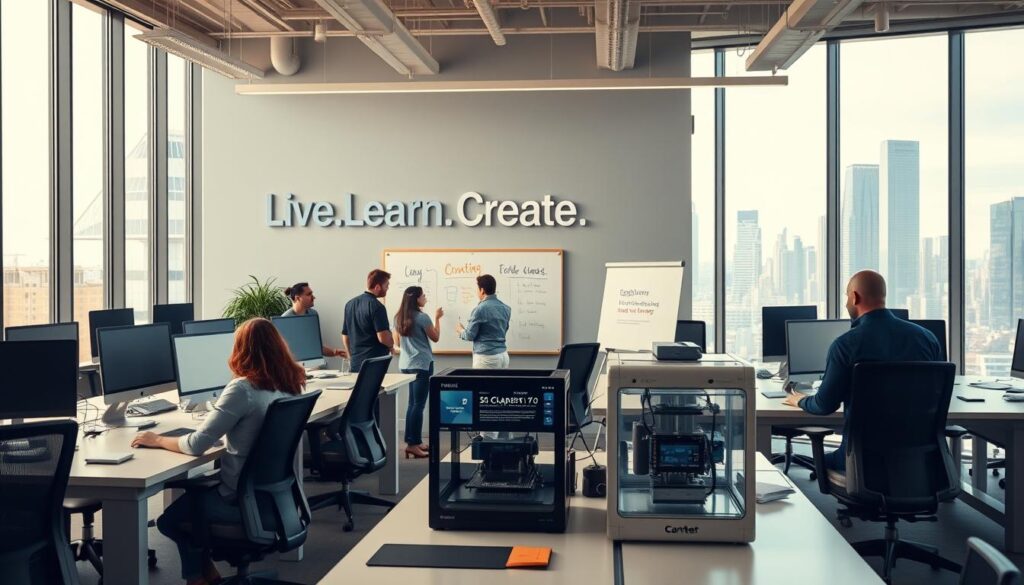
Innovation is the driving force behind business growth and success in the modern economy. Companies that innovate are better positioned to achieve a competitive advantage, driving growth and profitability. By leveraging technology innovation, businesses can create new products, services, and processes that meet evolving customer needs.
How Companies Leverage Innovation for Growth
Businesses can drive growth by fostering a culture of innovation. This involves encouraging experimentation, embracing risk, and investing in research and development. For example, companies like Netflix have transformed their business models through continuous innovation, shifting from DVD rentals to streaming services and original content creation. By doing so, they’ve maintained a competitive edge in a rapidly changing market.
Case Studies of Innovation-Driven Success
Several companies have achieved remarkable success through innovation. The birth of Silicon Valley is a prime example of how innovation can create new industries and drive economic growth. Other notable cases include:
- Toyota’s development of lean manufacturing, which revolutionized the automotive industry.
- Procter & Gamble’s Connect + Develop program, which accelerated product development through collaborative innovation.
These case studies demonstrate how different approaches to innovation can lead to sustainable competitive advantage. By embracing innovation, companies can create new opportunities for growth and stay ahead in their respective markets. For more insights on innovation and personal growth, connect with a community of lifelong learners and creators at https://livelearncreate.blog.
The Economics of Innovation
The economics of innovation is a vital area of study that explores how new ideas and technologies drive economic growth. Innovation is not just a buzzword; it’s a critical component that fuels productivity, enhances competitiveness, and opens up new markets. By understanding the economics behind innovation, we can better appreciate its impact on our economy and society.
Innovation as a Driver of Economic Growth
Innovation is a significant driver of economic growth, contributing to increased productivity and competitiveness. Technological innovation, in particular, has the potential to revolutionize industries, creating new opportunities and jobs. As countries invest in research and development (R&D), they are more likely to experience sustained economic growth. This is because R&D leads to the creation of new knowledge, technologies, and capabilities that can be leveraged for economic benefit.
Countries that prioritize innovation tend to have stronger economies, as innovation leads to the development of new industries and the expansion of existing ones. This, in turn, can lead to increased production and economic prosperity.
Investment in R&D and Innovation Outcomes
Investment in R&D is a crucial factor in determining innovation outcomes. Organizations that commit significant capital to R&D are more likely to develop breakthrough innovations that can drive economic growth. Companies like 3M demonstrate the value of structured investment approaches to R&D, allowing employees to dedicate time to self-directed projects. This approach has yielded consistent innovation outcomes, contributing to the company’s success.
The relationship between R&D investment and innovation outcomes is complex, requiring not just financial resources but also human talent and effective management. By balancing investments across the innovation spectrum, organizations can create comprehensive innovation systems that drive economic growth and competitiveness.
Overcoming Barriers to Innovation
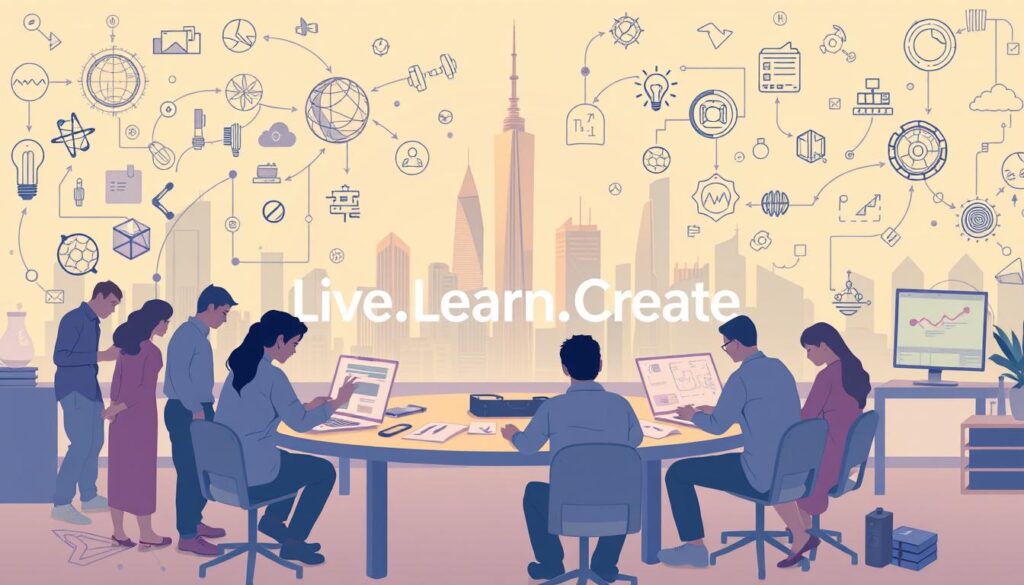
Innovation is crucial for progress, but it’s often hindered by various barriers. Organizations striving for innovation must navigate through a complex landscape of obstacles, both internal and external.
Common Obstacles in the Innovation Journey
The path to innovation is fraught with challenges. Common obstacles include resistance to change, limited resources, and a lack of clear innovation process. Many organizations struggle with creating an environment that fosters creativity and experimentation. Overcoming these barriers requires a deep understanding of the innovation process and a willingness to adapt.
Strategies for Breaking Through Resistance
To overcome these challenges, organizations can employ several strategies. Start by initiating small, manageable innovation initiatives that can demonstrate value quickly. Creating dedicated innovation spaces, either physical or virtual, can also help. Developing clear innovation process frameworks and building diverse, cross-functional teams are crucial steps. Additionally, cultivating mindfulness practices can help innovators remain present and resilient in the face of challenges.
By understanding the common obstacles and implementing intentional strategies, organizations can break through resistance and foster a culture of innovation. This involves capturing feedback, promoting learning from both successes and failures, and continuously seeking new opportunities for innovation. For more on mindfulness approaches that support innovation and personal growth, visit https://livelearncreate.blog.
Innovation Across Different Sectors
As we continue to innovate, we’re witnessing a ripple effect that touches multiple sectors of our economy and society. Innovation is not limited to a single industry; it’s a pervasive force that drives progress in various fields.
Healthcare and Education Innovations
In healthcare and education, innovation is revolutionizing the way we approach complex challenges. For instance, telemedicine has expanded access to healthcare services, while online learning platforms have transformed the education landscape. These advancements are not only improving outcomes but also making services more accessible and efficient.
Government and Public Service Innovation
In the realm of government and public services, innovation management is key to enhancing citizen engagement and streamlining operations. By leveraging technology and new methodologies, governments can create new services and improve existing ones, leading to better governance and public satisfaction.
Environmental and Sustainability Innovation
Sustainable innovation is critical in addressing environmental challenges. Innovations in renewable energy, sustainable agriculture, and green building technologies are not only reducing our ecological footprint but also promoting social responsibility. For example, circular economy innovations are reimagining product lifecycles to eliminate waste and pollution, while renewable energy technologies are transforming how we generate and distribute power. These advancements demonstrate how innovation can drive environmental sustainability while creating new economic opportunities and improving services.
By embracing innovation across different sectors, we can tackle complex problems more effectively and create a more sustainable and equitable future.
Developing Your Innovation Mindset

To innovate, one must cultivate a mindset that welcomes change and experimentation. Innovation involves a mindset that embraces change, welcomes ideation, and encourages experimentation. This mindset is not limited to generating new ideas but also encompasses the process of turning these ideas into reality. It’s about being open to learning from both successes and failures.
Cultivating Curiosity and Creative Thinking
Cultivating curiosity is fundamental to developing an innovation mindset. It’s about being inquisitive, asking questions, and seeking out new experiences. Creativity is the backbone of innovation, and it can be nurtured through practices such as brainstorming, mind mapping, and exploring different perspectives. By fostering a culture of curiosity and creativity, individuals can generate new ideas and approaches that drive innovation forward.
Embracing Failure as Part of the Process
Embracing failure is a critical aspect of the innovation process. It’s about recognizing that setbacks are not endpoints but rather stepping stones towards success. Thomas Edison’s quote about finding 10,000 ways that didn’t work before inventing the light bulb exemplifies this mindset. Practicing mindfulness and developing resilience can help manage the emotional aspects of failure, allowing us to observe setbacks with curiosity rather than judgment. By reframing failure as experimentation, we can turn disappointments into valuable learning experiences.
Feeling more present and calm is just the beginning of developing the emotional foundation for innovation. For more on mindfulness practices that support innovation, visit https://livelearncreate.blog.
Tools and Techniques for Innovative Problem-Solving
Effective innovation requires a combination of the right mindset, tools, and techniques to solve complex problems efficiently. In today’s fast-paced world, organizations and individuals alike are constantly seeking new ways to drive progress and stay ahead of the curve.
Design Thinking and Lean Innovation Methods
Design thinking is a human-centered approach that emphasizes empathy, creativity, and experimentation to solve complex problems. By understanding the needs and desires of users, organizations can develop innovative solutions that truly resonate. Lean innovation methods, on the other hand, focus on streamlining processes and eliminating waste to drive efficiency and speed.
Collaborative Approaches to Innovation
Collaborative approaches to innovation harness collective intelligence and diverse perspectives to solve complex problems and generate breakthrough ideas. Open innovation expands the innovation process beyond organizational boundaries, inviting external partners, customers, suppliers, and even competitors to contribute to solving challenges. This can lead to more radical model innovation by combining diverse knowledge, skills, and perspectives.
- Crowdsourcing platforms like InnoCentive and Kaggle tap into global talent pools to address specific innovation challenges.
- Co-creation involves working directly with users or customers to develop solutions that meet their needs and preferences.
- Cross-functional collaboration brings together diverse internal perspectives, creating solutions that integrate multiple forms of expertise.
By embracing these collaborative approaches and leveraging the right tools and techniques, individuals and organizations can drive innovation and achieve significant progress in their respective fields. For more insights on collaborative innovation approaches, visit https://livelearncreate.blog.
Unleash Your Innovative Potential Today
The power to innovate lies within each of us, waiting to be unleashed. Innovation isn’t just about technology or research development; it’s about cultivating a mindset that embraces change and welcomes new ideas. By understanding that innovation involves both creative thinking and disciplined execution, we can start applying innovative thinking to our everyday challenges.
To start your innovative journey, begin by cultivating self-awareness. Understand your unique strengths and the problems you’re passionate about solving. Build your innovation toolkit by learning specific techniques and frameworks, such as design thinking, to structure your approach to creative problem-solving.
Seek out diverse experiences and perspectives that challenge your assumptions and expand your thinking. Innovation thrives at the intersection of different fields and viewpoints. Find or create communities that support your innovative efforts – people who encourage experimentation and celebrate learning.
As you embark on this journey, remember that innovation is a capacity we all possess and can develop with intention and practice. It’s driven by curiosity, creativity, and the desire for improvement, leading to economic growth, social progress, and sustainable development. Ready to start building a life you love? Visit https://livelearncreate.blog for more inspiration, tools, and guides on personal growth and innovation.
FAQ
What drives the need for technological innovation in today’s fast-paced world?
The need for technological innovation is driven by the desire for economic growth, improved quality of life, and staying competitive in an ever-evolving global market.
How does disruptive innovation differ from sustaining innovation?
Disruptive innovation creates new markets or destroys existing ones by introducing groundbreaking products or services, whereas sustaining innovation improves existing products or services.
What role does creativity play in the innovation process?
Creativity is essential in generating new ideas and finding novel solutions to complex problems, driving the innovation process forward.
How can organizations foster a culture that supports open innovation?
Organizations can foster a culture of open innovation by encouraging collaboration, embracing diverse perspectives, and creating safe spaces for experimentation.
What is the significance of feedback systems in the innovation journey?
Feedback systems help refine ideas, identify potential pitfalls, and inform decision-making, ensuring that innovations meet the needs of their intended audience.
How can risk management strategies be effectively integrated into the innovation process?
Risk management strategies can be integrated by identifying potential risks, assessing their likelihood and impact, and developing mitigation plans to address them.
What is the relationship between investment in R&D and innovation outcomes?
Investment in R&D is crucial for driving innovation outcomes, as it provides the necessary resources for research, development, and testing of new ideas.
How can sustainable innovation contribute to environmental and social well-being?
Sustainable innovation can contribute to environmental and social well-being by developing products, services, and processes that minimize environmental impact and promote social equity.
Transform your home into a more peaceful and mindful sanctuary. Creating a Zen-inspired home environment is a core part of the “Live.Learn.Create” theme, focusing on peace, mindfulness, and a clutter-free space. Here is a curated list of Zen home items.
The Zen Essentials
These items are the building blocks of a calm, intentional living space.
- Candles & Scents:
- Scented Candles: Look for calming, natural scents like sandalwood, lavender, white tea, or bergamot. Choose candles made with soy or beeswax for a clean burn.
- Essential Oil Diffusers: A minimalist, sleek diffuser made of bamboo, ceramic, or glass.
- Essential Oil Sets: Look for blends specifically for relaxation, focus, or sleep.
- Incense & Burners: Natural incense sticks (e.g., palo santo, sage) with a simple, elegant burner.
The Zen Decor
This is about incorporating natural elements and simple design.
- Natural Materials:
- Wood or Bamboo Trays: For organizing candles, stones, or other small items.
- Ceramic Vases: Simple, unglazed ceramic vases in neutral colors like white, beige, or gray.
- Minimalist Art: Simple line drawings, abstract prints, or nature-inspired artwork.
- Hand-Carved Stone Coasters: Or other small stone sculptures.
- Textiles:
- Linen or Cotton Throws: A soft, neutral-colored throw blanket to add warmth.
- Jute or Sisal Rugs: These add natural texture and grounding to a space.
- Meditation Cushions (Zafu) & Mats (Zabuton): These provide comfort for meditation and add a serene touch to a room.
The Zen Ambiance
These items help create a peaceful sensory experience.
- Lighting:
- Himalayan Salt Lamps: These provide a warm, soft glow.
- Japanese-style Paper Lanterns: For a soft, diffused light source.
- Dimmable Smart Bulbs: To easily control the warmth and brightness of your lighting.
- Sound:
- Tabletop Water Fountains: The gentle sound of running water is incredibly calming.
- Wind Chimes: Made from natural materials like bamboo or metal for a soft sound.
- Bluetooth Speakers: Small, aesthetically pleasing speakers for playing ambient or meditation music.
- Nature:
- Bonsai Trees or Air Plants: Low-maintenance indoor plants that bring life and a touch of nature indoors.
- Zen Gardens: A small, tabletop sand garden with a rake and stones for a meditative ritual.
- Decorative Rocks & Pebbles: For bowls or as a decorative element.
Best Sellers https://amzn.to/3Vet1tI
New Releases https://amzn.to/4mwLjTi
Amazon Movers & Shakers https://amzn.to/4fPsZlP
Mindfulness Coloring Books https://amzn.to/4fQ0wMx
Personal Growth Coloring Books https://amzn.to/4lJeRf0
Health & Wellness https://amzn.to/4oRt24C
Zen Home Decor https://amzn.to/3VeA3i6
Zen Garden Decor https://amzn.to/4mXjT8D
Zen Garden https://amzn.to/3HQTVVB
- Mindfulness & Meditation:
- Physical Wellness:
- Habit & Productivity Tools:
- Books:
- Best-selling personal development books (Mindset, The 7 Habits of Highly Effective People, The Subtle Art of Not Giving a F*ck)
- Books on a variety of skills (coding, photography, writing.)
- Educational Gadgets:
- Smart pens that digitize notes (e.g., Rocketbook)
- Portable scanners for digitizing documents
- Laptops, tablets, and accessories
Create (Creativity, Innovation, Projects)
These products cater to your creative side, whether you are a artists, writer, or DIY enthusiasts.
- Creative Supplies:
- Adult coloring books or “paint-by-sticker” books
- Craft kits (e.g., candle-making, pottery, embroidery)
- Digital Creation Tools:
- General Inspiration & Making:

